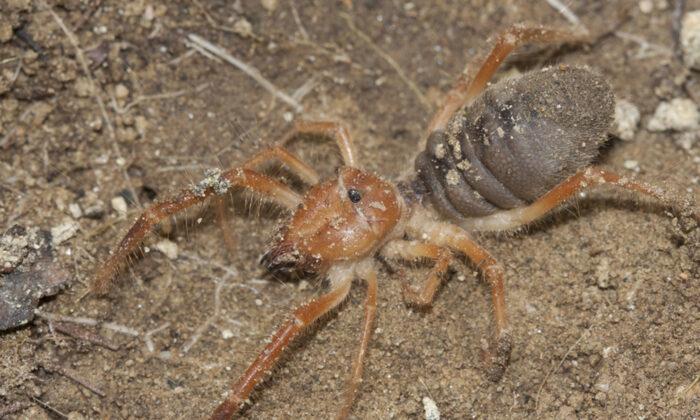Arizona resident Thomas Acosta had heard of camel spiders residing in his locale, but in all of his 37 years living in the southwestern state, he’d never stumbled across anything like them.
The man from Queen Creek on the outskirts of Phoenix first encountered the eight-legged creature outside the window of his house one day, and at first, he thought it was a scorpion.
Acosta told local news that he’d been worried that the spindly intruder could harm his family’s pet. “We do have a small pet, and I wouldn’t want anything to hurt her,” he told ABC15. “She’s kind of old.”
Luckily for him (and the family pet), the bizarre arachnid he discovered doesn’t like to bother humans or their pets. But as to whether it’s a spider or a scorpion?
Turns out it’s actually neither—but it is related to both.
Arizona State University biology Ph.D student Pierce Hutton told the local news that the creature is a part of the genus Eremobates and falls in a category of its own. Commonly referred to as a camel spider, sun spider, or wind scorpion, it’s not officially either a spider or a scorpion—though it is still considered a cousin to both and is designated as a type of arachnid.
Native to desert regions like Arizona, camel spiders look similar to regular spiders—except they also have giant pincers up front like scorpions and scary-looking jaws, called chelicerae, which they use to chew up their prey. They boast eight legs, but two “feelers” at the front of their bodies make it look like they crawl around on 10 legs instead of eight.
These spider-scorpion cousins may be frightening to stumble across, but for humans, they don’t actually pose a risk. Despite their formidable appearance and menacing-looking chompers, these bugs aren’t actually venomous. Still, that might not put everyone at ease; even though a bite won’t hospitalize you, it’s nonetheless worth staying away from these particular crawlers. Their saliva contains enzymes that liquify flesh, which helps them to properly digest the food they feast upon. Which, given just how big the arachnids can get, sometimes includes critters like rodents, small birds, and even other unsuspecting insects.
Acosta explained that he’d heard of these wind scorpions during his time in Iraq but didn’t realize they were local to his home.
“I didn’t know they are native to Arizona,” he said. “I have seen camel spiders, but I heard of them in Iraq.”
He didn’t call the spider-scorpion hybrids scary but rather simply odd—hence snapping a picture to share with the world. For now, though, as he told the news outlet, he’s looking into hiring an exterminator—and it’s kind of hard to blame him.





Friends Read Free